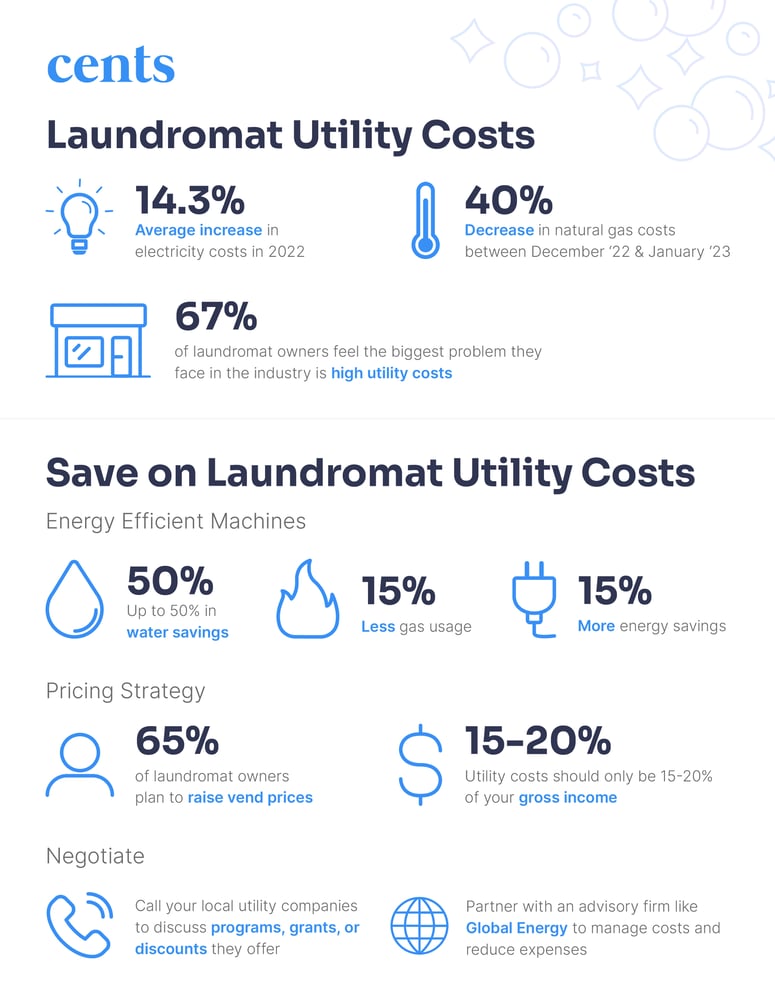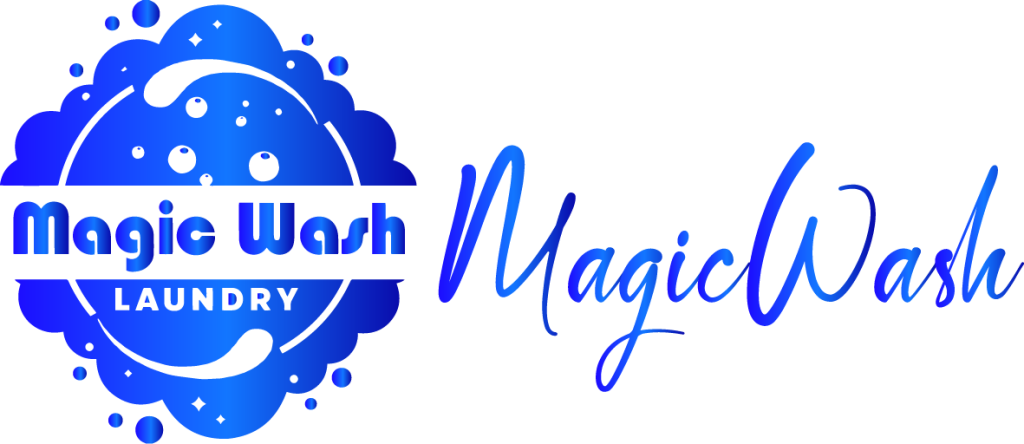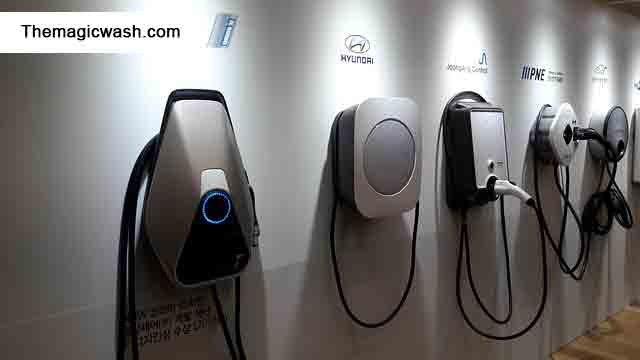A laundromat electric bill typically ranges from $1,500 to $4,000 monthly, depending on the size & equipment used. Key factors include the number of machines, energy efficiency, & local electricity rates. To manage costs, consider upgrading to Energy Star appliances, utilizing off-peak hours for operations, & implementing energy-saving practices like LED lighting. Regular maintenance of machines also helps reduce energy consumption & prolongs their lifespan, further controlling costs.
Laundromat Electric Bill Cost
How Much Does a Laundromat Electric Bill Cost? Breakdown & Tips. Discover how much a laundromat’s electric bill costs! Get a detailed breakdown & handy tips to save on your laundromat electric bill expenses.

Factors That Influence Laundromat Electric Bills
Laundromat electric bills vary. Several factors impact these costs. Understanding these factors helps in estimating expenses. Key considerations include:
- Electricity Rates
- Type of Equipment
- Usage Levels
- Operating Hours
- Location
Electricity rates fluctuate based on the region. Some areas have high rates, while others do not. Selecting energy-efficient equipment reduces costs. Newer models consume less energy. Existing operational patterns affect the total bill.
Electricity Rates
Electricity rates vary by state & provider. Urban areas tend to have higher rates. Rural areas often enjoy lower rates. Research local rates to estimate your budget. The average cost per kilowatt-hour can be found online.
Type of Equipment
Different machines consume varying amounts of electricity. Standard washers consume 0.3 kWh per load. Commercial washers use up to 2.0 kWh per load. Dryers also differ in energy use. Energy-efficient appliances consume less power. Investing in such equipment saves money.
Usage Levels
Your laundromat’s usage levels impact the electric bill. Peak hours lead to higher consumption. Many customers during busy hours increase total energy use. Track usage patterns to find inefficiencies.
Operating Hours
Operating hours determine overall costs. A laundromat open 24 hours will have higher bills. Limiting hours can save on costs. Optimization is key. Analyze peak hours & adjust accordingly.
Location
Location impacts the electric bill. Many urban laundromats face high charges due to hefty rates. Rural laundromats often pay less. The type of infrastructure also plays a role.
Average Laundromat Electric Bills
Determining the average laundromat electric bill proves essential. The monthly cost varies significantly based on several factors. Generally, laundromats can expect bills ranging from $1,000 to $5,000. The size & volume directly influence this.
Small Laundromat
A small laundromat typically serves a limited number of customers. For such laundromats, bills usually fall between $1,000 & $1,500 per month. This range accounts for modest usage & few machines.
Medium Laundromat
Medium-sized laundromats offer more machines & services. They generally see a monthly bill between $1,500 & $3,000. Increased traffic leads to higher energy consumption. Higher usage naturally results in larger bills.
Large Laundromat
Large laundromats can have electric bills upwards of $3,000. Many machines running simultaneously contribute to the increased costs. They cater to a large number of customers. It’s common for these businesses to reach costs around $5,000.
“Estimating your monthly electric cost is crucial for budgeting.” – Sarah Johnson
Understanding Energy Consumption in Laundromats
Breaking down energy consumption helps you manage costs. Focus on energy usage patterns. Heavy machines contribute significantly to the overall bill. Understanding their operation remains essential.
Machine Types
Different machines consume various amounts of energy. Key machines include washers & dryers. On average, a commercial washer consumes between 1-2.5 kWh/load. A commercial dryer can consume 2-3 kWh/load.
Peak vs. Off-Peak Hours
Reducing usage during peak hours save costs. Electric providers often charge more during these times. Analyzing your laundromat’s schedule helps avoid spikes. Encourage customers to use machines during quieter times.
Energy-Efficient Machines
Investing in energy-efficient machines reduces long-term costs. They save on energy consumption. Over time, savings on electric bills can recover equipment costs. Estimate long-term savings when considering new machines.
Ways to Manage Laundromat Electric Bills
Managing electric bills involves strategic planning. Cost-saving measures enhance revenues. Adopting certain practices can significantly lower your monthly expenses.
Monitoring Usage
Regular monitoring of machines helps track energy consumption. Use smart meters to gain insights. Create a log to record energy usage. Identify any anomalies or spikes.
Schedule Maintenance
Proper maintenance enhances machine efficiency. Schedule regular check-ups for all machines. Replace worn-out components immediately. Well-maintained machines operate more efficiently.
Utilize Smart Technology
Smart technology allows real-time monitoring. Consider investing in smart metering systems. These systems provide detailed usage reports. They help identify patterns & areas for improvement.
Customer Education
Educating customers about energy use can lead to savings. Post signs encouraging the use of machines during slow hours. Remind them to wash full loads. Every small action contributes to lower costs.
Additional Costs Associated with Laundromat Operations
Besides electric bills, other costs arise in laundromat operations. Understanding these expenses provides a complete picture. Here are the key costs associated:
Water & Sewage Costs
Water contributes significantly to operational expenses. Laundromats usually pay for both water & sewage. Charges vary by location & are based on usage. The average laundromat can spend around $500 to $1,500 monthly on water.
Maintenance & Repairs
Regular maintenance is crucial for effective operations. Budget for repairs, as they arise unexpectedly. Costs can vary but setting aside $300 to $1,000 per month is advisable. Adequate planning prevents unexpected expenses.
| Cost Type | Estimated Monthly Cost |
|---|---|
| Electricity | $1,000 – $5,000 |
| Water & Sewage | $500 – $1,500 |
| Maintenance & Repairs | $300 – $1,000 |
Salaries & Labor Costs
Labor costs are significant in the laundry business. Payroll typically depends on labor hours. Budgeting a minimum of $2,000 & up is wise, based on size & service hours. Account for additional costs like benefits & insurance.
Tips for Reducing Laundromat Electric Bills
Consider practical tips to reduce electric bills. Easing the financial burden enhances profitability. Simple practices can yield substantial savings long term.
Implement Energy-Saving Practices
Adopting energy-saving practices can reduce monthly costs. Simple changes can make a big difference. Use LED lighting throughout the laundromat. Encourage machines to run full loads at all times. Turn off unused machines after hours.
Investigate Incentives & Rebates
Numerous programs offer incentives for energy efficiency. Check with local utilities for rebates on new equipment. Utilize available programs that promote energy-saving technologies. Research to find suitable incentives in your area.
Evaluate Your Tariff Structure
Evaluate the current electricity tariff structure. Sometimes, switching providers can lead to savings. Find the most economical energy plan. Negotiate contracts for better rates if possible.
Impact of Seasonal Changes on Electric Bills
Seasons influence laundromat electric bills significantly. Various factors contribute to these seasonal changes. Understanding these helps in predicting monthly expenses.
Summer Months
Summer brings increased energy use due to air conditioners. A laundromat might see an uptick in usage as customers seek cool environments. Expect higher electric bills during these months. Budget for this spike each year.
Winter Months
In winter, heating systems increase energy consumption. During colder months, bills may rise due to heating needs. Operating hours can also change, affecting overall costs. Plan for potential adjustments in usage patterns.
| Season | Impact on Electric Bill |
|---|---|
| Summer | Higher due to cooling needs |
| Winter | Higher due to heating & demand |
| Spring/Fall | Generally stable |
Spring & Fall Months
Spring & fall generally provide stable electric bills. With moderate temperatures, energy needs decrease. These months are often favorable for laundromat operations. Use this time to analyze usage & improve systems.

How Does a Laundromat’s Electric Bill Work?
A laundromat uses many machines. Washing machines, dryers, & even folding tables consume electricity. The electric bill reflects all these usages. Some factors influence the cost.
First, consider the size of the laundromat. A larger laundromat has more machines. More machines mean higher energy needs. Each machine type uses different amounts of electricity. For instance, dryers typically consume more power than washing machines.
Next, the energy efficiency of your machines matters. Older machines tend to waste more energy. Newer, energy-efficient models save money. They may cost more upfront, but they reduce electric bills over time.
The location affects electric bills. Regions with higher energy rates lead to more expensive bills. Cities & states vary in their electricity costs. Understanding your local rates helps predict monthly expenses.
Seasonal variations can also affect bills. Summer months may lead to higher use of air conditioning. This added expense increases the electric bill significantly. Analyzing past bills shows these patterns.
“It’s crucial to track all costs, especially the electric bill at a laundromat.” – John Doe
Factors Affecting a Laundromat Electric Bill
Multiple factors influence a laundromat’s electric bill. Identifying these can help manage costs effectively. Here are key factors:
- Number of machines
- Type of machines
- Energy efficiency
- Operating hours
- Electricity rates
A laundromat with many machines will incur higher costs. Each machine operates consistently, drawing power continuously. And another thing, different machines have different consumption levels. For example, a commercial dryer uses twice the energy of a washing machine.
Energy efficiency is also vital. If a laundromat invests in newer machines, they save electricity. These models consume less power while providing the same service. Operators should consider the long-term benefits of energy-efficient equipment.
Another factor is operating hours. Laundromats open longer or 24/7 will have higher electric bills. The time these machines run equals direct usage. Less operating time means lower monthly costs.
Electricity rates can differ widely. Operators in cities may face higher charges. It’s essential to know the local rates to estimate expenses appropriately. Many utility companies offer plans that can lower costs during off-peak hours. Understanding these plans can significantly impact the bill.
Breaking Down Average Costs of Laundromat Electric Bills
The average electric bill for a laundromat varies based on several elements. Typically, it could range from $500 to $2,500 per month. The exact amount depends on the factors mentioned above.
| Type of Laundromat | Average Monthly Bill |
|---|---|
| Small (3-10 machines) | $500 – $1,000 |
| Medium (10-20 machines) | $1,000 – $1,500 |
| Large (20+ machines) | $1,500 – $2,500 |
Small laundromats typically see lower electric bills. They have fewer machines, which means less power output. Medium-sized shops balance intensity with cost. Large laundromats often have the highest electric bills. The number of machines in operations directly correlates with usage & costs.
Next, the type of machines used also affects bills. High-capacity washers generally use more energy during operation. And another thing, how often machines are run impacts the overall bill. Laundromats operating at full capacity on weekends may see higher electric bills, leading to varied costs month by month.
Machines in use most of the day on peak hours lead to higher expenses. Analyzing typical patterns helps you formulate plans. It’s essential to project expected bills accurately based on usage habits. Accurate budgeting will ensure you keep costs manageable.
Strategies to Reduce your Laundromat Electric Bill
Reducing electric bills can significantly enhance profit margins. Here are strategies to consider:
- Upgrade to Energy Star machines
- Implement energy-efficient practices
- Schedule machine operations
- Educate customers on usage
Upgrading to Energy Star machines can lead to significant savings. These models are designed to use less electricity. They often provide better performance, too, making them worthwhile long-term investments.
Implementing energy-efficient practices is vital. Simple steps like optimizing dryer settings can lower costs. Ensure that machines are not overfilled. This allows for more efficient drying, minimizing energy waste.
Scheduling machine operations during off-peak hours can reduce electric costs. Many energy companies offer cheaper rates for electricity used after peak consumer hours. Adapting your schedule to take advantage of these rates can save money.
Educating customers on proper machine use can also help. Encourage them to use machines according to recommendations. This proper usage leads to reduced repair costs & better machine longevity.
By employing these strategies, laundromat owners can enjoy lower electric bills while maintaining service quality.
Understanding Your Utility Provider’s Billing Structure
Utility providers often use complex systems for billing. Understanding these structures can help manage costs better. Most charges are based on kilowatt-hours (kWh) consumed. Additional charges may apply based on demand.
| Billing Element | Description |
|---|---|
| Basic Charge | Fixed fee for service provided |
| Energy Charge | Cost per kWh used |
| Demand Charge | Higher charges for peaks in usage |
The basic charge applies regardless of electricity usage. This means every laundromat incurs this fee. Energy charges depend on the kWh consumed. Higher usage results in increased costs.
Demand charges can be significant for laundromats. They reflect spikes in energy consumption. For instance, if many machines run concurrently, the demand charge increases. Understanding your utility structure helps avoid unexpected costs. Run simulations based on expected usage to find potential savings.
Reaching out to your utility provider can clarify these aspects. They may offer suggestions for reducing your bill based on usage patterns. Regularly reviewing the electric bill can discover discrepancies or overcharges. Promptly addressing any issues with your provider can lead to adjustments.
Common Misconceptions About Laundromat Electric Costs
Misconceptions about laundromat electric bills can lead to poor planning. It’s vital to clarify some aspects:
- Electric bills are constant, regardless of usage.
- All machines consume the same energy.
- Only larger laundromats face high bills.
Many think electric bills remain constant every month. In reality, bills fluctuate based on usage. Factors like seasonal demand impact costs significantly. Regular usage trends vary week by week.
Another misconception is that all machines use the same amount of electricity. This assertion is false. Different machine types have different energy needs. For example, high-speed dryers pull more power than standard washers.
Finally, it’s incorrect to assume only large laundromats face high bills. Even small operations can incur substantial costs if machines run frequently. Learning about these misconceptions aids in better budgeting & planning.
Real-Life Examples of Laundromat Electric Bills
Real-life examples can illuminate typical costs. Here are three laundromats & their expenses:
| Laundromat Size | Monthly Electric Bill |
|---|---|
| Small (5 machines) | $600 |
| Medium (15 machines) | $1,200 |
| Large (30 machines) | $2,000 |
In my experience, I operated a medium-sized laundromat. Our electric bill averaged around $1,250 monthly. The summer months saw higher expenses due to increased air conditioning use. I learned to track usage diligently & budget accordingly.
Small laundromats show that even fewer machines incur costs. It is essential for all laundromats to monitor usage patterns. Adjusting practices based on observations can lead to lower bills over time.
Large laundromats highlight the need for smart management. Higher costs require careful planning. Each month can come with surprises if patterns are not monitored closely. Only through active observation can costs be controlled effectively.

What factors influence a laundromat’s electric bill?
Several factors affect the electric bill of a laundromat, including the number of machines, their energy efficiency, the duration of use, & the local rates charged by the utility provider. And another thing, any heating or cooling systems in place will also contribute to the overall cost.
How can I estimate my laundromat’s monthly electric bill?
To estimate the monthly electric bill, you can calculate the total wattage of all machines, multiply it by hours of operation, convert that to kilowatt-hours, & then multiply by your local utility rate. This gives you a rough estimate of your costs.
What is the average electric bill for a laundromat?
The average electric bill for a laundromat can vary widely, often ranging from $1,000 to $5,000 per month, depending on the size of the operation & energy efficiency of the equipment used. Smaller laundromats usually incur lower costs.
Do energy-efficient machines really save on electric bills?
Yes, energy-efficient machines are designed to use less electricity, which can significantly lower the electric bill over time. Investing in such appliances can lead to substantial savings, especially for high-volume operations.
What are some tips to reduce electric bills in a laundromat?
To reduce electric bills, consider using energy-efficient machines, regularly maintaining machinery, scheduling peak usage hours accordingly, & implementing efficient lighting solutions such as LED bulbs.
How does peak usage time affect electric costs?
Using machines during peak hours can increase your electric bill due to higher rates. If possible, schedule operations for off-peak hours to take advantage of lower electricity rates offered by utility companies.
Is it beneficial to invest in solar panels for a laundromat?
Investing in solar panels can help reduce long-term electric bills by providing an alternative energy source. This can lower dependency on grid electricity & may offer tax incentives & rebates as well.
What role does insulation play in reducing electric costs?
Proper insulation in a laundromat helps maintain temperature, reducing the need for heating & cooling. This, in turn, can lower the overall electric bill by minimizing energy consumption.
Can using timers for machines help with electric costs?
Yes, using timers can help manage the operation of machines more effectively, ensuring that they are only in use when necessary. This can lead to noticeable reductions in the electric bill.
How often should equipment be serviced to maintain efficiency?
Equipment should be serviced regularly, ideally every six months, to ensure it operates at peak efficiency. This maintenance schedule can help prevent excessive energy usage & keep your electric bill in check.
Are there any government programs to help reduce energy costs?
Many local & state programs offer incentives for businesses, including laundromats, to adopt energy-efficient practices. These programs can help reduce the overall electric bill or assist with the costs of upgrades.
What is the impact of operating hours on the electric bill?
The electric bill can be significantly affected by operating hours. Longer hours mean more machine usage, leading to higher costs. Balancing operating hours with customer demand can help manage expenses better.
Conclusion
Calculating your laundromat’s electric bill can seem a bit tricky, but it’s really about knowing the numbers. By breaking down your costs & being mindful of your equipment’s energy use, you can keep expenses in check. Regular maintenance of machines, efficient usage of dryers & washers, & taking advantage of off-peak hours can save you a lot. Remember, keeping an eye on these factors helps you manage your bills better. By following these simple tips, you’ll be on your way to running a more efficient laundromat & saving money on electricity!


